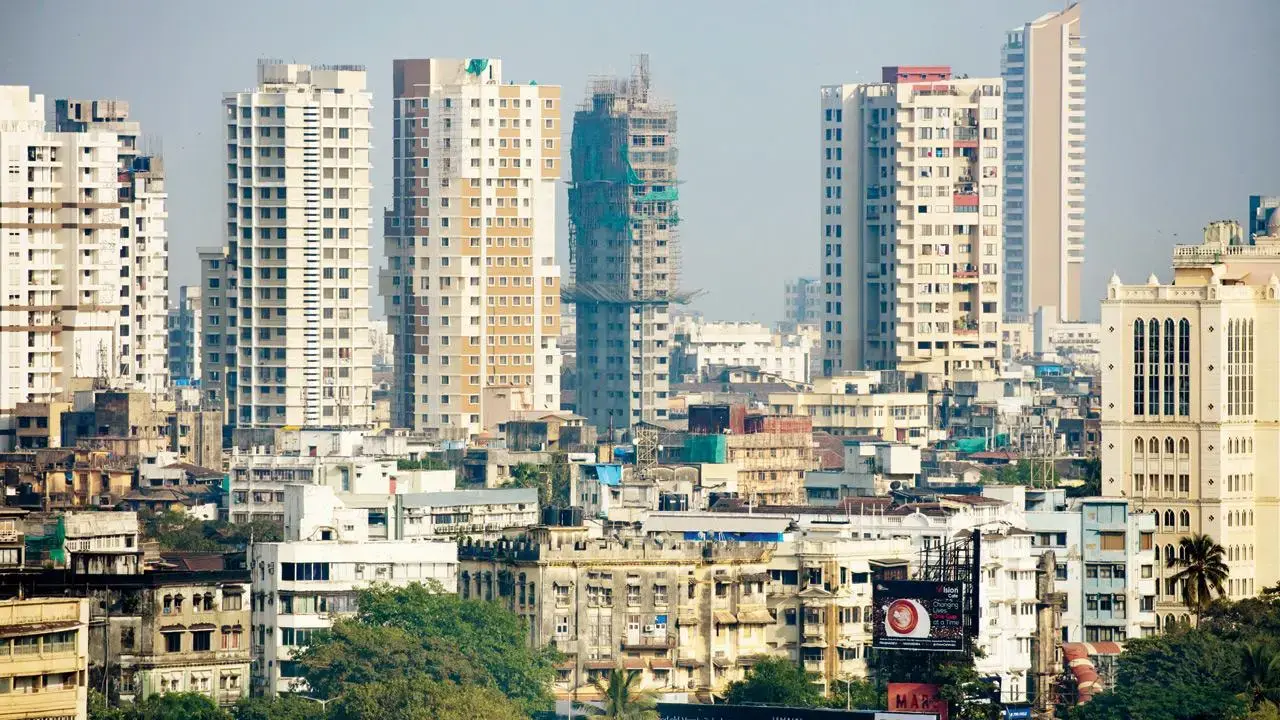Table of Content
- Key Features of Maharashtra Housing Policy 2025
- Comprehensive Guidelines for Senior Living Projects
- Redevelopment of Old-Age Homes: A Crucial Initiative
- Demographic Realities and the Need for Senior Living Projects
- Benefits for Stakeholders
- Expert Opinions on the Policy
- Addressing Challenges and Ensuring Success
- Conclusion
The Maharashtra Housing Policy 2025 is offering a variety of transformative reforms that will improve accessibility and affordability while promoting inclusivity for housing for Senior Citizens. With meaningful financial benefits for both buyers and developers, the Housing Policy will support housing for Maharashtra's aging population, and particularly those aged 65+, 70+, and beyond. As the policy includes a flat ₹1,000 stamp duty, property tax concessions, as well as incentives for developers, it is a flagship for progressive urban development in India.
Key Features of Maharashtra Housing Policy 2025
Stamp Duty Reduced to ₹1,000 for Senior Living Buyers
The notable aspect of the policy is a reduction in stamp duty to a flat ₹1,000 for senior living property buyers. An incredible drop from 5% to 7% of the property value (depending on location), this significant reduction is a direct financial relief to elderly buyers. Senior housing projects become affordable and attractive to a growing segment of the population.
Property Tax Concessions
Owners of senior living properties will also enjoy reduced property taxes. This concession serves as an added financial relief for the elderly, enabling them to invest in properties specifically designed for their needs.
Developer-Friendly Measures
To promote the growth of the senior housing segment, the policy offers several incentives to developers:
- Enhanced Floor Space Index (FSI): Developers are allowed higher FSI to optimize land use.
- Tax Relaxations: Reduced taxes aim to lower the overall project costs for developers.
- Single-Window Clearance: Faster approval processes for senior living projects encourage quicker project launches.
- Mixed-Use Development: Up to 15% commercial usage within senior housing projects is now permitted, fostering integrated communities.
Also Read: Government Proposes Bill for Digital Property Registration: Key Insights
Comprehensive Guidelines for Senior Living Projects
Mandatory Registrations and Zoning Flexibility
Under the Maharashtra Housing Policy 2025, senior living projects must be registered with both RERA and a district-level monitoring committee. Furthermore, such projects can now be developed in both residential and green zones, offering greater flexibility in location choices.
Accessibility Requirements
To ensure convenience for residents, developers must provide public transport access and medical facilities within a 5-kilometer radius of the projects. This mandate addresses the critical mobility and healthcare needs of elderly residents.
Essential Amenities
The policy stipulates that senior living projects must include:
- Recreational spaces for leisure and social interaction.
- Gyms and fitness areas tailored to elderly users.
- Dining halls and common kitchens for communal dining experiences.
- Emergency services, such as nurse stations and on-call doctors to provide immediate medical assistance.
Safety and Partnerships
Developers are required to partner with NGOs, hospitals, or registered service providers to ensure quality care services. Safety norms set by MahaRERA must be strictly followed to create secure living environments for senior citizens.
Redevelopment of Old-Age Homes: A Crucial Initiative
In a significant move, the Maharashtra government plans to redevelop aging old-age homes and orphanages situated on public land. These facilities will be integrated with modern senior living projects to create inclusive spaces for the elderly. By upgrading these establishments, the policy addresses the growing need for safe and affordable housing options tailored to senior citizens.
Demographic Realities and the Need for Senior Living Projects
Maharashtra’s elderly population, 10% of total at 2011 Census (26965362); potentially to 17% by 2036. The changing demographics of the state shows the necessity to address housing catered to the older population through available options. Commonly, there are also societal change through a decrease in the traditional joint family structure; where the nuclear family dominates. This trend has introduced the immediate want of independent senior living options, emphasizing safety, comfort and accessibility.
Benefits for Stakeholders
Senior Living Buyers
For senior citizens, the policy offers substantial financial savings through reduced stamp duty and property tax concessions. It also provides access to thoughtfully designed housing that includes essential amenities, creating a safe and fulfilling living environment.
Real Estate Developers
The incentives outlined in the policy, including tax relaxations and higher FSI, make senior housing projects economically viable for developers. The simplified approval processes and mixed-use development permissions also encourage faster and more innovative project executions.
Government and Society
By fostering a senior housing ecosystem, the policy enables the government to address the unique needs of its aging population while promoting sustainable and inclusive urban development.
Expert Opinions on the Policy
Maharashtra Housing Policy 2025 has won much admiration from industry experts for its future-facing tone and focus on senior living.
Dosti Realty Director Anuj Goradia said, "The policy's acknowledgement of senior living as an asset class and the significant push provided by the incentives offered will make senior housing projects more bankable and viable. The changes to the policy are long overdue as there is an urgent need for elderly-friendly housing."
Keval Valambhia, COO, CREDAI-MCHI stated on the policy's inclusion of the elderly, "By ensuring that the policy is inclusive by addressing medical tie-ups, universal accessibility and incentive frameworks into planning norms, the policy preserves the dignity of our elderly population and also opens up new possibilities for active private sector involvement."
Addressing Challenges and Ensuring Success
While the Maharashtra Housing Policy 2025 is transformative, its success depends on effective implementation. Some key challenges include:
- Fraud Prevention: Ensuring transparency and authenticity in partnerships and registrations.
- User Training: Educating developers, officials, and potential buyers about the new guidelines.
- Regional Expansion: Expanding the reach of these projects to underserved rural areas.
By addressing these challenges, the state government can ensure that the policy achieves its intended objectives.
Also Read: PM Modi Highlights RERA Compliance as Key to Restoring Trust in Housing Market
Conclusion
The Maharashtra Housing Policy 2025 represents a significant step forward in urban development, providing tailored solutions for the elderly while encouraging alternative senior housing that will spur private investments. The new policy focuses on affordability, inclusivity, and sustainability, creating an innovative framework for addressing an aging population’s housing needs.
Therefore, not only will this initiative create a higher quality of life for senior citizens, but it also reinforces Maharashtra's commitment to implementing progressive and inclusive urban planning strategies. Other states can follow this example to create age-friendly housing solutions.
Follow AquireAcers Whatsapp Channel to Stay Updated With The Latest Real Estate News

_1748516510.webp)



_1764657403.webp)


Ans 1. The policy focuses on providing affordable, accessible, and inclusive housing solutions tailored to senior citizens, while promoting sustainable urban development.
Ans 2. Senior citizens purchasing properties specifically designed as senior living homes are eligible for the flat ₹1,000 stamp duty benefit.
Ans 3. Senior living property owners enjoy reduced property taxes, which provide additional financial relief and make owning such properties more affordable.
Ans 4. The government plans to redevelop aging old-age homes and orphanages, integrating them into modern senior living projects to create inclusive, updated spaces for the elderly.
Ans 5. Projects must comply with MahaRERA safety norms and ensure partnerships with NGOs, hospitals, or service providers to deliver high-quality care services.
Ans 6. Yes, the policy allows senior living projects to be developed in both residential and green zones, providing more location flexibility for developers.
Ans 7. Developers are required to ensure that public transport and medical facilities are available within a 5-kilometer radius of senior living projects.
Ans 8. With Maharashtra's aging population projected to increase significantly, the policy addresses the growing demand for independent, accessible, and elderly-friendly housing solutions.